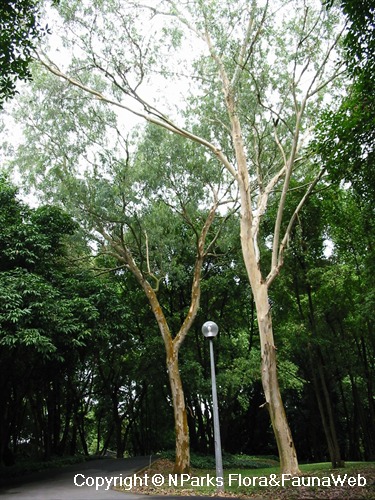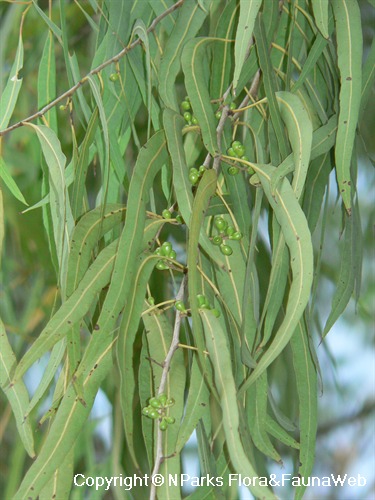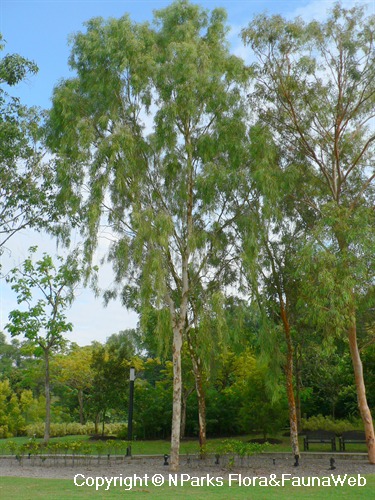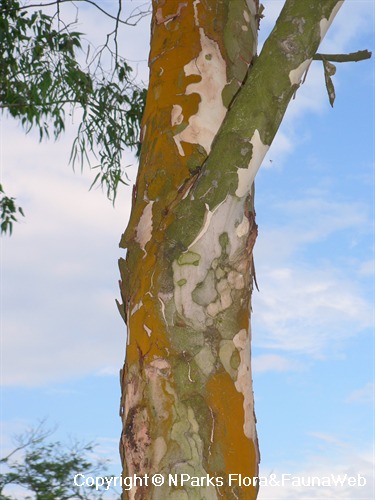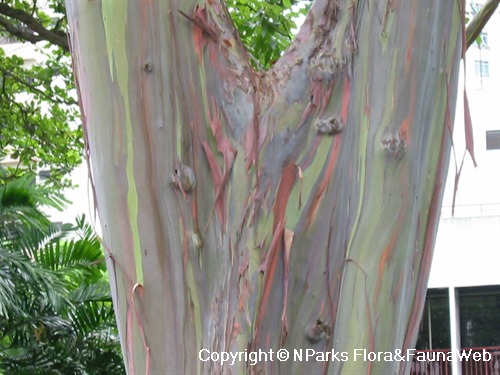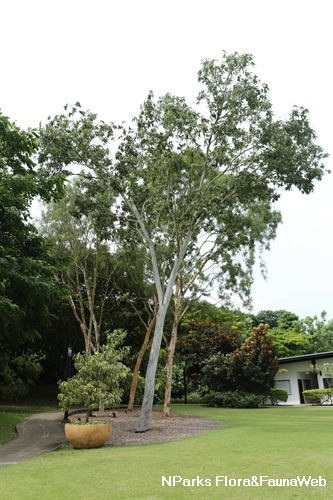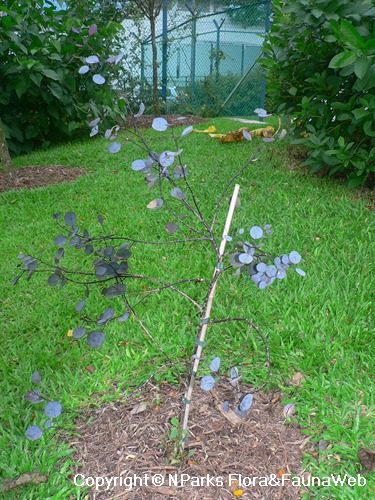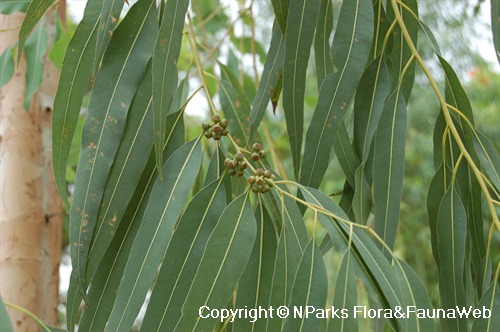
Name
Classifications and Characteristics
| Plant Growth Form | Tree |
|---|---|
| Plant Shape | Irregular |
| Maximum Height | 20 m |
| Maximum Plant Spread / Crown Width | 15 m |
Biogeography
| Native Distribution | Australia |
|---|
Description and Ethnobotany
| Foliage | Adult leaves lanceolate, usually 10-15cm, sometimes up to 25cm long, pendulous as with most eucaplypts. Juvenile leaves opposite at first, then alternate; broad lanceolate. Leaf texture is smooth and not glaucous, dull green to blue green in colour. |
|---|---|
| Flowers | Fairly insignificant flowers, white or creamy, 7-11 borne in axillary umbels. |
| Others - Plant Morphology | A tall tree with smooth textured bark that often peels off in long strips, giving the appearance of a spiralled or patterned trunk with a mix of white, grey, brown or red bark. It is a very widespread species, and therefore exhibits great variation from place to place. Cultivated varieties in urban landscapes are usually more upright and slender than those occuring in their natural habitat.Distribution:Very widespread across its native Australia, almost invariably found along watercourses. Two varieties are officially recognized - E. camaldulensis var. camaldulensis which mainly occurs in southeastern Australia, and E. camaldulensis var. obtusa which occurs in central, western and northern Australia. It is found in a wide variety of biomes, but is typically most common along riverine areas, which are periodically flooded. Fruit:A small (6 x 10mm), dry, woody explosive capsule with exserted (protruding) valves. |
| Etymology | The genus epithet 'eucalyptus' comes from the Greek 'eu' meaning "well-" or "good" and 'kalypto' meaning "to cover", which refers to the operculum or 'cap' covering the flower buds of plants belonging to this genus. The species epithet 'camaldulensis' refers to Camalduli in Italy where a specimen in a private garden was the first of its species to be botanically described. |
| Ethnobotanical Uses | Others: A common source of pollen and nectar for the production of high quality honey. It is also a common forestry tree in seasonally dry parts of Southeast Asia. The wood is hard and durable and has been used for many purposes, including railway sleepers, flooring, fencing, plywood, veneer, firewood and charcoal. |
Landscaping Features
| Desirable Plant Features | Ornamental Flowers, Ornamental Trunk |
|---|---|
| Landscape Uses | Suitable for Roadsides, General |
Plant Care and Propagation
| Light Preference | Full Sun |
|---|---|
| Water Preference | Moderate Water |
| Plant Growth Rate | Moderate |
| Rootzone Tolerance | Waterlogged Soils (Drains Site) |
| Propagation Method | Seed, Stem Cutting |
Foliar
| Mature Foliage Colour(s) | Green |
|---|---|
| Leaf Area Index (LAI) for Green Plot Ratio | 2.5 (Tree - Open Canopy) |
Image Repository
Others
| Master ID | 1592 |
|---|---|
| Species ID | 2885 |
| Flora Disclaimer | The information in this website has been compiled from reliable sources, such as reference works on medicinal plants. It is not a substitute for medical advice or treatment and NParks does not purport to provide any medical advice. Readers should always consult his/her physician before using or consuming a plant for medicinal purposes. |

